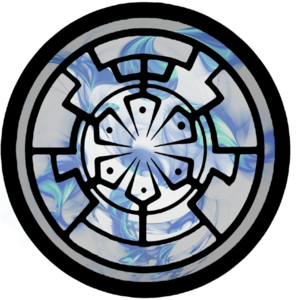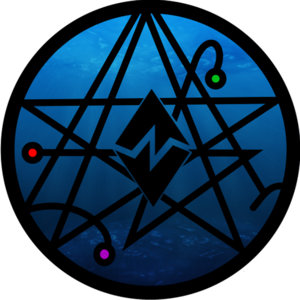Arcane Magic
| Arcane Magic | ||
|---|---|---|

|

|

|
Arcane magic is the most widely spread magic throughout the realms. It is a type of Magic that does not require more than study and repetition, and so well known that many books are sold and written about it, though of course, some types are kept secret from the masses. A mage that uses arcane magic draws his powers from the void, a realm of thoughts and emptiness, which he must first learn how to connect to. After being able to establish such a connection a mage can often draw forth the powers of the Void, releasing spells into the other realm, may it be a temporary boulder or even connecting with the minds of others.
Contents
The Void
Arcane Magic is an archetype of magic which is fueled by void energy, or more specifically mana. The Void is an empty plane of existence where things may be created with the use of one's imagination and willpower. Many teachers of the Arcane often teach students with the following proverb: "The Void is nothing, yet everything. Like our imagination, it may be dull and empty; or it can be full and colorful". The Void as a whole is simply a plane where nothing exists, unless the mage makes it exist. Since one must connect to the Void, this means a basic line of communication must be established, generally gained through meditation and practice. Since Void users must be connect to draw on the Void, distractions are capable of severing the connection for Novices, while Masters are capable of holding onto their connects until they are drained of mana, or wounded. It should be noted that only mages of proper age can connect to the Void. Those under the age of 16 can receive mental damage if they connect to the Void, and so those of the age of 16 and above can begin to practice voidal forms of magic.
The Mana
Mana is known as a form of energy, being found at nearly every place within the realms. Unlike many forms of energy mana can be passively produced by any soul, no matter what kind of soul it is, as such causing Mana to surround most peoples soul in the form of a thin and invisible layer. However, due to it’s passive aspect this Mana can only be manipilated by the producer of itself, means the person or figure it was created from. By controlling this Mana the soul converts it into the active form of Mana, which is than used to cast for spells and chants of any kind. Thusly, a ‘Mana pool’ is how much passive Mana a soul has produced and amassed around a body. Typically, a soul never uses its passive Mana pool, and the excess passive Mana seeps away as invisible Aura. When passive Mana is produced by a soul, it is specific to that soul, and thus when it seeps to become Aura or is converted to active Mana and burned, it has a specific Aura colour.
All soul-bearing individuals require passive Mana to survive, and thus converting all of one’s passive Mana into active Mana results in death (the death occurs due to being unable to do anything, be it breath, think or move). Passive Mana is capable of being manipulated or changed, though this is an ability that only mages can do. Shade magic, for example, may convert passive Mana into Amber, whilst alteration may manipulate passive Mana and alter the properties of objects.
In regards to Mana Pools, they describe how much Mana a person has, and this determines how grand spells can be, along with the duration a spell can be held in the current world. Mana pools are governed by two things; Skill level and Magic type. Skill level is simply how skilled mages are at manipulating mana for their specific magical form. Magic type is a little more complicated, different magic forms are naturally more mana consuming then others, a few examples of very draining forms are Alteration, Arcane Evocation and Conjuration.The Aura
The Aura is a side-product of casting most forms of magic, not only being limited to voidal forms, but also some deity and dark forms of magic. Through its color, the Aura is often directly representing a part of the mages personality, dreams or even desires. As such Auras can have all variety of colors, ranging from white to pure black and from dark violet to bright yellowish-colors.
However, while auras have a color, they are not actually visible in most cases. Aura is generated from the Mana pool regularly, and if a Mage uses large amounts of Mana at once for spells, they in turn produce more Aura. Auras are generally harmless and are simply a way of self expression. Some magics such as Arcanism, Alteration, and Shade are directly tied to Auras, and are heavily affected by them.
Arcane Magic Forms
Arcane Magic holds the most forms of possible magical subtypes, ranging from the simple manipulation of matter to the abilities to affect the minds of others. As such Arcane Magic is often seen as a fairly powerful, yet, also dangerous form of magic to learn.
Alteration Forms
Transfiguration is an Arcane magic associated with the change of the natural and unnatural elements of the realms. Transfiguration focuses around alteration of already existing elements by using “mana-anchors”, connections between the realms and a place called the Void. Through this connection mana is being lead into the present realm, taking form and holds it in our realm as long as the mage is able to concentrate. If too much mana is being used up the anchor will become unstable and the spell will break apart. The same applies to situations were the caster isn’t able to uphold his concentration any longer.
Telekinesis is the Arcane magic form of moving objects with the mind. This magic type utilized the mind to move objects, either by giving them a push or even causing them to levitate. Like Evocation Telekinesis is based around influencing the mana around or within an object, causing the mage to control the objects gravitational shift. However the mana, just like it would do in evocation, fades quickly after the magic is dismissed, leaving the object free of its artificial force of gravitation and causing it to return to it’s original path of gravity.
While other types of Arcane Magic use the Void to manifest things from it, Void Translocation takes the objects from our world and sends them to the void, like a gigantic pocket. While a simple magic to comprehend, it is incredibly difficult to learn and use. As such Void Translocation is disassembling and assembling inorganic material or just material into the Void for storage. While this seems fairly helpful the person must know everything about the material they are disassembling inside and out of the Void. In the disassembling and reassembling process, it’d take about as long and as much effort to send an object into the Void as receiving it back, as such making it fairly inefficient for combat.
Voidal Shift is also known as Voidal Transportation and is one of the four Alteration subforms of Arcane magic.The art of voidal shifting can be seen as a child of translocation, entering the void through a similar means. The complex factor that separates the two is the anchor. The anchor is a unique conglomeration of mana and voidal energies; this is used instead of Translocation’s studying and research of the particular object you are sending into the void. As such Voidal Shifting was split up into it’s own subform of Arcane Magic.
Evocation Forms
Elemental Evocation is known as a unique form of magic, using the Void to call forth pseudo elements. However, calling forth the elements is limited to a few specific ones, mostly the elements of fire, earth, air, water and electricity, making Elemental Evocation a situational form of magic. As such Elemental Evocation does not control the existing elements, it creates a temporary version of them and only as long as the caster is able to uphold the spell. At the same time all created elements affect the mage that created them and so a mage can be easily hurt by their own magic. Due to such dangers many students are rather against learning Elemental Evocation, but many magical facilities are offering classes to learn this form of magic.
Arcanism is known as the eldest form of all arcane magic and as the foundation for all arcane forms of magic to come. It is the manipulation of pure voidal energy and transcends beyond natural properties seen in elemental evocations. With it a mage can cast their hearts whimsy or devastate the battlefield with a variety of both offensive and defensive spellcasting. Arcanism, like elemental evocation and conjuration, is the act of evoking a substance from the void. What is evoked is highly variable, even in the color it takes on, and thus the magic is truly unique from caster to caster.
Conjuration, the art of drawing forth living beings from the void after thoroughly studying and learning of the conjured creature or plant. The simplest description of this magic would be as such ‘Life Evocation’. As an Arcane art, Conjuration relies on the void to create what will be summoned before pulling it into the real world and then sustaining such with mana. In the case the summon would no longer be sustained, it would vanish.
Illusion Forms
The art of altering the world doesn’t just lay in the hands of alterations. In the world of deception comes a magic that was forged around twisting the fabric of the world. The art of Sensory Illusion is a craft that allows a sly mage to mold the senses of another individual, allowing them to create astounding feats from changing the appearance of one's face to creating something that isn’t really there. As such Sensory Illusion is the arcane or voidal art of creating false vision and sensations.
Cognatism, the voidal feat that came forth from a Voidal Horror invading one’s mind, is a rather rare and barely used magical art. It causes the user to have a second mind invading their first, and with proper experience, one can learn to utilize this formed, chaotic second mind to work in tandem with the first, to enhance their mental capacity to a great extent.
Mental magic is best summarized as the interactions between two minds. Every mind capable of thought leaves a slight trace of itself in the Void and it is this leak which allows mental magic to work. Things such as thoughts, emotions, and desires are intangible by nature and thus drift beyond our plane of existence into others, such as the spiritual and voidal realms. Those small leaks are often referred to as artificial minds, being separated entities on their own. Using the Void is how a Mental mage shapes their work so a voidal connection is required in order to learn or use this art.
| |||||||||||||||